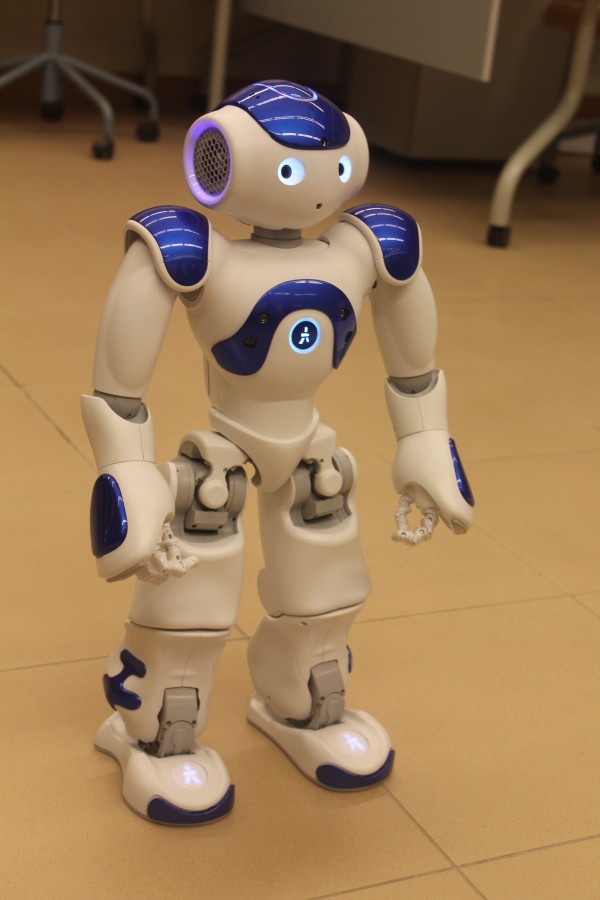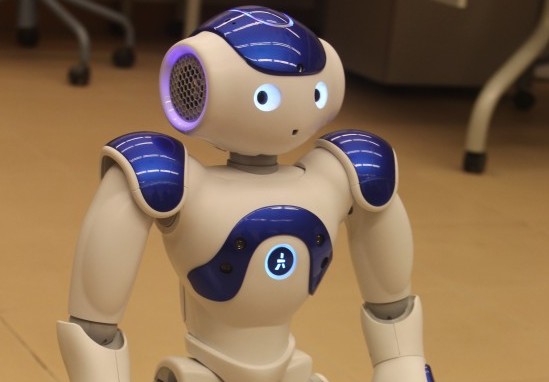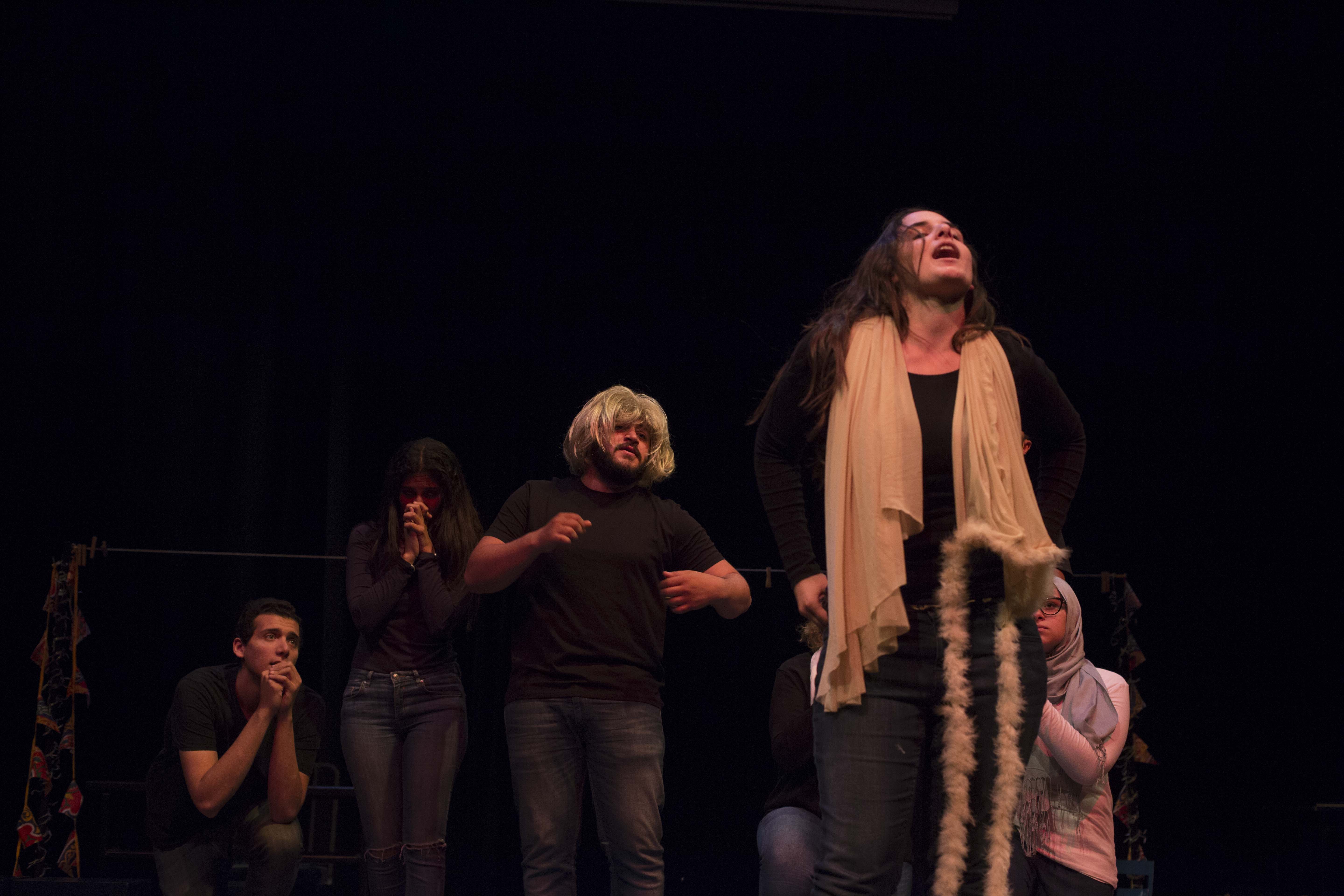The Robot AUC Never Knew About
BY KARIMA RAGAB

Hidden deep in the heart of the School of Sciences and Engineering (SSE) building at AUC, lies a secret only a few people know about: a robot in the Embedded Systems Lab.
The Embedded Systems Lab (CSCE 438L) is a required course for computer engineering students who are eager to learn how to program hardware devices and have them perform specific operations.
This semester’s class was introduced to a talking robot, which debuted its Macarena dance in front of the students.
For the students’ final project, they will program robots to play musical pieces.
The humanoid robot named Joe was programmed by Computer Engineering Graduate, Abdallah Galal, to talk, dance, and interact with humans.
When switched on, the robot introduces himself by saying “hello, my name is Joe”.
He can sense movement around him and moves his head accordingly. When called upon, Joe responds and blinks.
Joe can recognize Galal visually and welcomes him by saying “hi Boudy”.
The $8000 robot is very sophisticated and requires a lot of effort in programming.
“It’s not just a toy,” explained Computer Engineering and Embedded Lab Professor Khaled El-Ayat.
“Robots like this one are used in universities in Hong Kong and at the Massachusetts Institute of Technology (MIT) for research purposes,” he added.
Embedded Lab students are required to conduct experiments every week in order to be prepared for the two main projects of the class.
“The first is called the “mini-project” during which we will program a robot to first solve a maze, deduce the shortest path, and then race back,” explained Computer Engineering and Electronics Engineering senior, Zeinab Kamel.
Kamel added that the second and final project will be to program at least two robots to communicate a certain theme, such as the musical compositions of Antonio Vivaldi, 17th century Italian composer.
“I chose Vivaldi because he is all about synchronization,” added El-Ayat. “Just like any two instruments, the robots must be in sync.”
El-Ayat did not deny that it is difficult to synchronize two robots with a particular piece of music.
“Timing is really important,” clarified Kamel. “If I want my two robots to sing, I have to make sure they are sending and receiving signals back and forth for them to know what they’re supposed to do,” added Kamel.
“It’s really nice because the theme is flexible,” explained Computer Engineering and Electronics senior Radwa Hamed. “I could apply it artistically on robots and it requires interactivity because Vivaldi had an orchestra, and it is all about synchronization and interactivity,” she added.
The final project is due to be presented during the Embedded Day, which is scheduled during the second week of May.
Embedded Day, sponsored by Microsoft, allows students to present their eight weeks of hard work and exhibit a demo.




